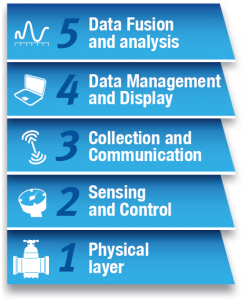Decoding Digital Water: Where Are We Now?
Just a few years back, phrases like ‘Digital Water’ or ‘Digital Transformation’ began making their way into conversations within the water industry. In the last decade, terms like ‘Digital Water’ and ‘Digital Transformation’ have gained traction in the water industry. Prior to that, ‘Smart Water’ was the buzzword, and before that, it was ‘Water 4.0’ and ‘Industry 4.0’. It’s worth noting that currently, new terms are still emerging, with references to Industry 5.0 and 6.0. However, the label is less important than the practical implications. So, what does ‘Digital Water’ actually mean for the water industry today?
It encompasses a wide array of elements, ranging from cutting-edge IoT sensors to digital renderings of pumping stations and treatment facilities, and the present-day marvel: the Digital Twin. Even the term ‘Digital Twin’ can hold different meanings for different people – for some, it represents a model, while for others, it stands as an all-encompassing source of insight into system performance. In my own experience, the most effective illustration that facilitated an understanding of Digital Water was presented by the Smart Water Networks (SWAN) Forum back in 2011.
The SWAN Layers, fashioned after the earlier Purdue Model, provide a structured framework for comprehending Digital Water by dividing it into distinct layers: physical assets (Layer 1), instrumentation (Layer 2), communications (Layer 3), visualisation (Layer 4), and ultimately, data analysis and conversion into actionable insights (Layer 5). Two layers were notably absent from this model: i2O Water.
 In the past 12 years, many others have added or contributed to the SWAN layers. However, the system already sufficiently summarises the horizontal layers of a data and information management system.
In the past 12 years, many others have added or contributed to the SWAN layers. However, the system already sufficiently summarises the horizontal layers of a data and information management system.
The weakness of the SWAN layers lies in its inherent technological orientation. In the realm of Digital Water, it’s imperative to acknowledge that there are other crucial perspectives to take into account, such as those related to business systems and human resources. While the SWAN Layers represented a pivotal paradigm shift in the industry and continue to do so, we must also factor in the business drivers. To achieve this, we must assess their requirements by scrutinising how the industry has evolved since the introduction of digital water solutions.
To put this into context, the area of the water industry where we have probably seen the most development, is leakage or non-revenue water reduction. Technologies have been developed and integrated into water company systems to discover leaks. We have seen an increase in technologies such as smart sensors in pipes, as well as satellites that use pattern recognition to highlight areas with an increased likelihood of water leaking into the ground. The industry is starting to see the development of digital solutions in the wastewater network as well, using machine learning and monitoring within the sewer environment to find and prevent blockages. This is indeed important as we know the environment is at a greater risk of pollution through sewer overflows because of sewer misuse.
When delving into the origins of digital water, much like any technological approach in any industry, it’s crucial to grasp its practical application. Personally, when I contemplate what I seek from Digital Water, I always return to the fundamentals. The global water industry generates vast volumes of data daily, yet only a fraction of it finds meaningful utilisation. To extract value from this data, the initial step is understanding the information requirements – from the CEO of the company to the frontline operator – and then aligning them with the data sources, changing the data strategy to suit. However, this marks just the inaugural phase. Once this foundational work is accomplished, the subsequent stride involves translating the information requirements into tangible business drivers.
This is what Digital Water means to me. Let us know what Digital Water means to you. The Digital Water Summit on 14-16 November 2023 in Bilbao, Spain, is the ideal arena to continue this discussion. I invite you to join me there by registering today: www.digitalwatersummit.org or join the conversation online using #DigitalWaterSummit


